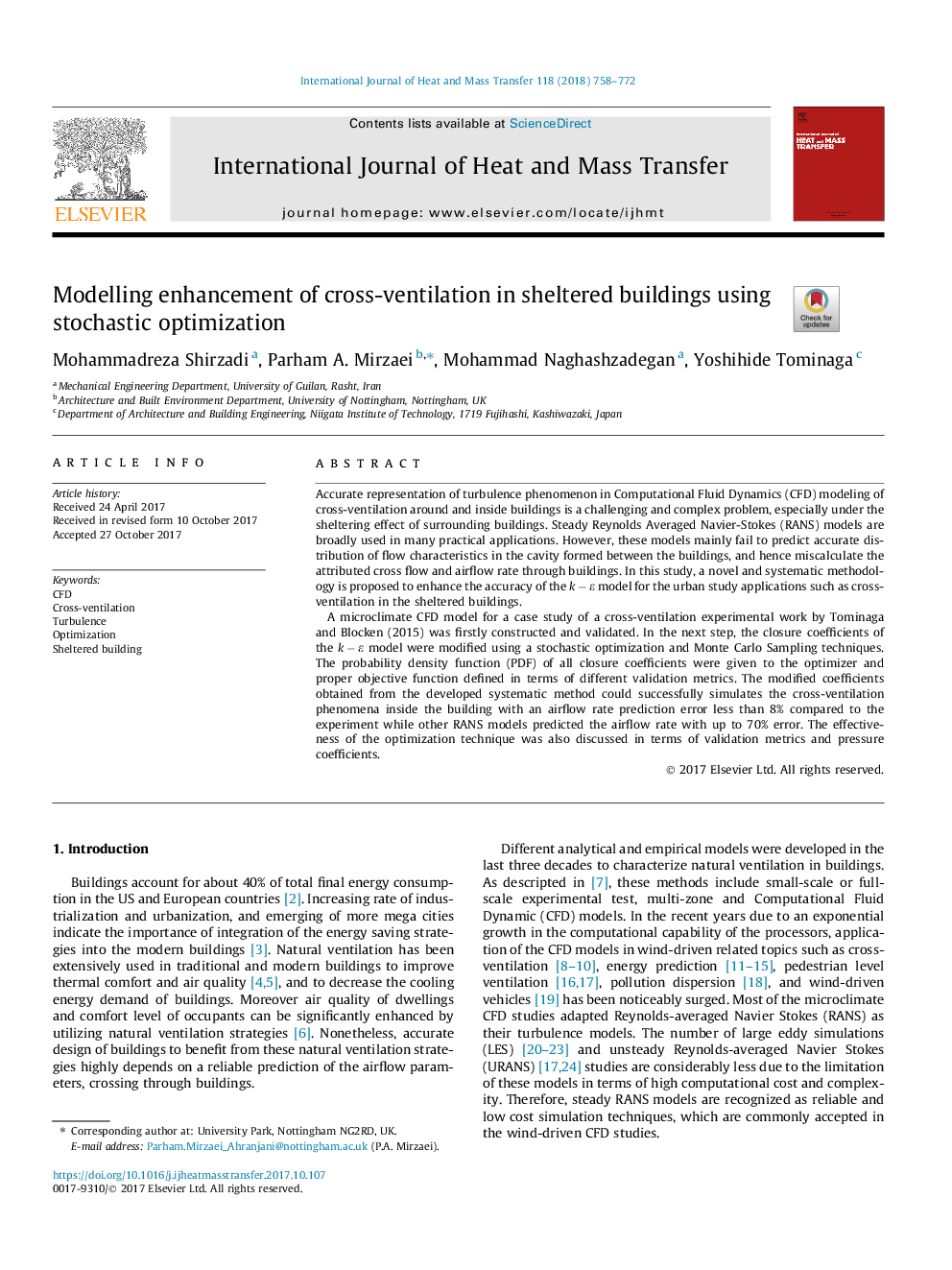| Article ID | Journal | Published Year | Pages | File Type |
|---|---|---|---|---|
| 7054796 | International Journal of Heat and Mass Transfer | 2018 | 15 Pages |
Abstract
A microclimate CFD model for a case study of a cross-ventilation experimental work by Tominaga and Blocken (2015) was firstly constructed and validated. In the next step, the closure coefficients of the k-ε model were modified using a stochastic optimization and Monte Carlo Sampling techniques. The probability density function (PDF) of all closure coefficients were given to the optimizer and proper objective function defined in terms of different validation metrics. The modified coefficients obtained from the developed systematic method could successfully simulates the cross-ventilation phenomena inside the building with an airflow rate prediction error less than 8% compared to the experiment while other RANS models predicted the airflow rate with up to 70% error. The effectiveness of the optimization technique was also discussed in terms of validation metrics and pressure coefficients.
Related Topics
Physical Sciences and Engineering
Chemical Engineering
Fluid Flow and Transfer Processes
Authors
Mohammadreza Shirzadi, Parham A. Mirzaei, Mohammad Naghashzadegan, Yoshihide Tominaga,
